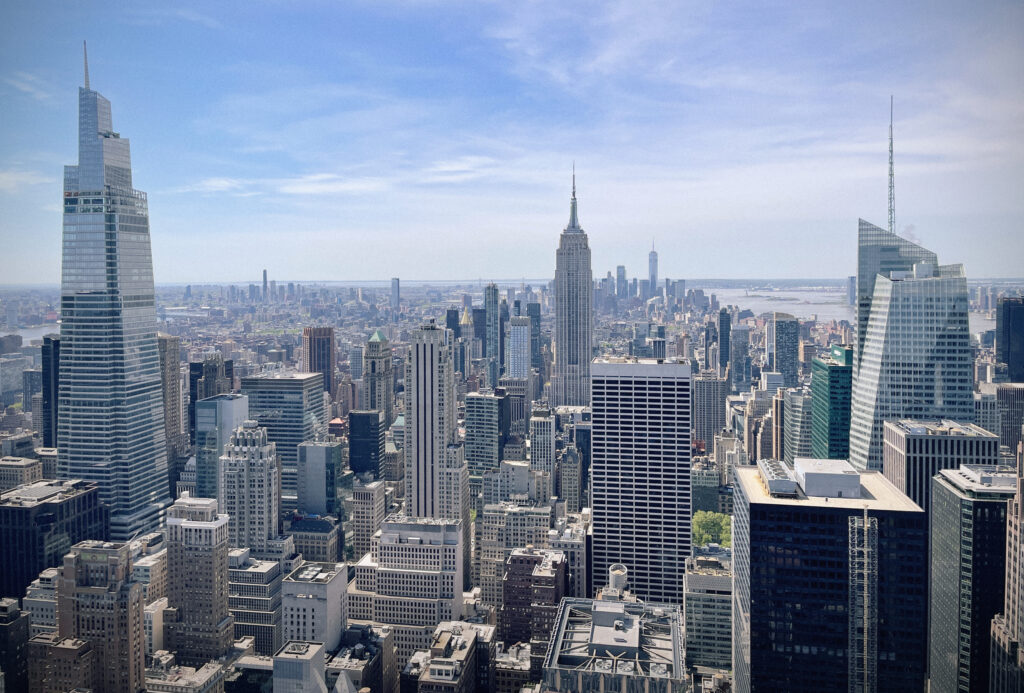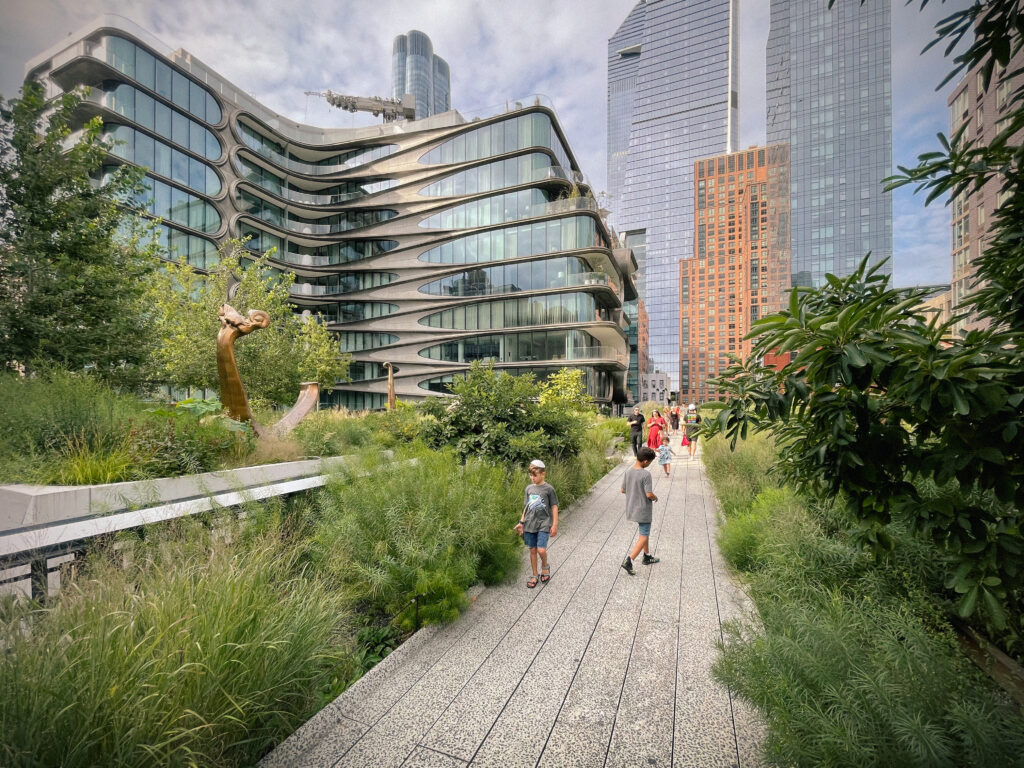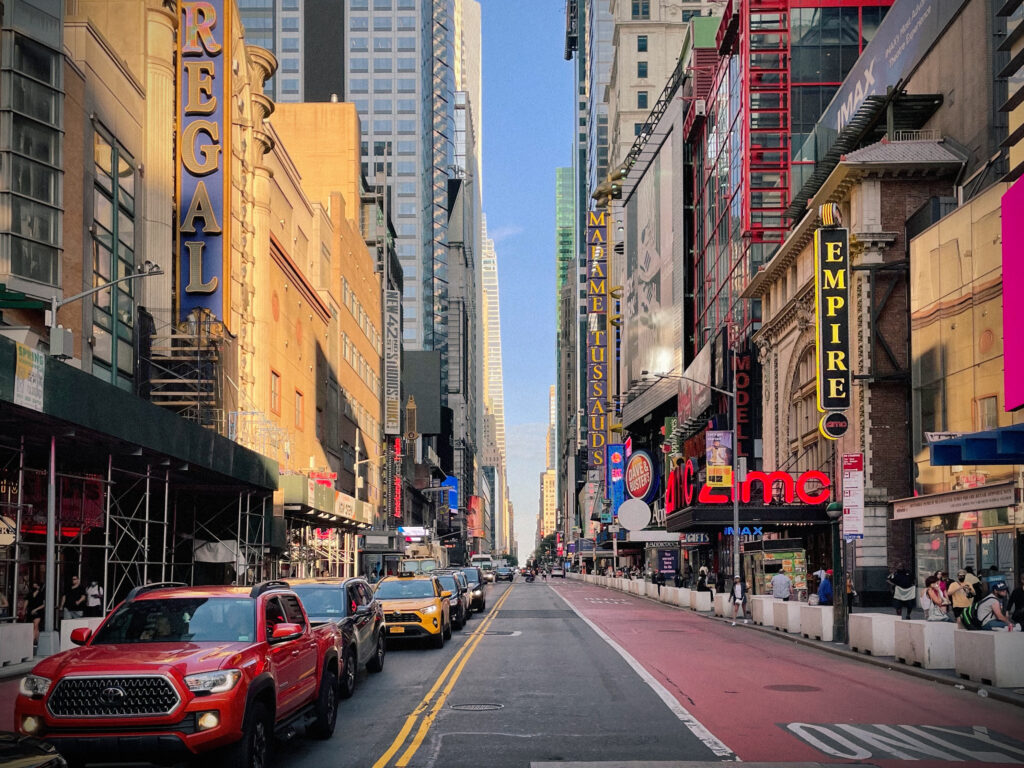
Is New York City a model for large cities, or does it stand out as an exception? How does the “Open Streets” policy during the COVID-19 pandemic reflect the city’s values? What makes it so challenging to establish rail transit to LaGuardia Airport? Why are many of New York’s iconic public spaces managed by private entities? How does the City calculate property tax bills?
This book uses everyday elements such as parks, communities, transportation networks, and buildings as case studies to unravel the core principles that define New York. It examines the intricate relationships between private entities, civil society, and government authorities. These stakeholders are not static allies or perpetual adversaries; rather, their dynamic interactions create a complex environment that New Yorkers live in. This fluid and often ambiguous interplay between the public and private sectors—an arena of constant negotiation and change—is the source of New York City’s greatest creativity.

Title of the book: 创造大都会 – 纽约空间与制度观察 (Creating the Metropolis – Spaces and Institutions of New York City)
Publisher: 上海三联书店 (Shanghai Joint Publishing)
ISBN: 978-7-5426-8492-9
Year: 2024
This book is written in Chinese
“This informed, engaging, and artfully written book by Yuxiang Luo goes directly to the heart of what makes New York City so fascinating, and helps readers understand why this particular city is the subject of so much international discussion and reflection. The concise narrative not only sheds light on every possible social, political, and physical infrastructure that keeps the city operating, ranging from transportation and government to community and real estate. The book and its author also address the million-dollar question that preoccupies residents and governing officials in every major city: how to manage the ongoing tensions between the public and the private? Whether by speaking to the pressures inherent in guaranteeing private property ownership while also offering spaces and amenities for the public, or by examining the ways that neighborhood-level community control can challenge administrative efforts to help the city function as a whole, Luo has filled these pages with insight and wisdom. One could not ask for a more timely or better introduction to a fascinating city that will never stay still.“
— Diane E. Davis
Charles Dyer Norton Professor of Regional Planning and Urbanism
Harvard University Graduate School of Design
“By observing the practices of New York, one can understand how to build a vibrant, livable, and harmonious metropolis, as well as how the market, society, and government each play their roles.”
— Ming Lu 陆铭
Distinguished Professor of Economics
Shanghai Jiao Tong University
Introduction: The Creativity of a Metropolis
I Public Space:
II Community:
III Transportation:
IV Real Estate Development:
V Government:
New York City defies expectations. With over a thousand parks, 8.8 million residents, 6,300 miles of streets, more than one million buildings, and a $100 billion municipal operating budget, the city’s staggering numbers leave people both inspired and overwhelmed.
Beyond its magnitude, New York City is also filled with intriguing idiosyncrasies. Some of the city’s most famous parks rely on private funding rather than government expenditure. Hispanic political candidates run ads in Chinese. Despite being one of the wealthiest cities in the country, New York lacks a subway system that meets basic standards of hygiene and timeliness. Some of the tallest towers were built without planning review. And if these still haven’t baffled you: political institutions that once governed the city for almost a century were suddenly ruled unconstitutional by the Supreme Court of the United States.
Undoubtedly, New York City is quirky. It challenges people’s conventional ideas of cityscapes and breaks many assumptions about how markets and policies are supposed to work.

I first visited New York in 2009. As a small-town nobody, I was in awe of everything in this great metropolis. A friend who grew up in Manhattan took me to the newest cool place in the city—the High Line. At that time, the High Line’s first phase had just been completed, but it already attracted an incredible number of visitors, both local and global. The park, transformed from a former industrial railroad, offered a captivating urban experience with its elevated platform. The tapestry of materials, textures, plants, and views took pedestrians to second- and third-floor levels, allowing us to explore a brand-new vista of the city. Like the other park-goers, I was filled with excitement as I roamed between buildings and above the bustling streets of Manhattan.
Since then, I have revisited New York frequently and eventually made it my home after graduating from school. Through my work in urban planning and economic development, I became increasingly fascinated not only by the physical spaces and vistas of New York but also by the intricate layering of economic, political, and social systems that underlie them.
The High Line, one of my first personal encounters with New York City, epitomizes the many institutions that shape the city’s unique spatial experiences. The birth of this iconic park can be traced back to a Community Board meeting where two strangers, sharing a vision to save a dilapidated rail structure, met and started a movement through their social networks, private fundraising, and advocacy.
The rail-to-park movement, despite strong support from community advocates, faced opposition from local property owners. These owners had long desired the destruction of the structure because their parcels, located underneath or abutting the rail, were undevelopable due to the railroad right-of-way.
To bring these property owners on board with the park project, the City administration devised innovative policies that protected the owners’ economic interests. Specifically, the City introduced a system of “transferrable development rights,” enabling affected owners to sell unused development rights to nearby properties that could be developed. This allowed undevelopable land to generate cash through property-to-property transactions. The parcels that purchased additional development rights became a hotbed of real estate innovation, transforming the High Line into not only a renowned open space but also a district filled with architectural wonders and, of course, record-breaking sales.
Undoubtedly, the government played a major role in bringing the High Line to life. However, its operations and maintenance have relied on private resources. The two strangers who met at the Community Board established the Friends of the High Line group, which is now the official park manager. Its $18 million operating budget is funded through donations, concessions, events, sponsorships, and fundraising (after all, the princely son of fashion designer Diane von Fürstenberg is on the board for a good reason).
The High Line’s success highlights the powerful synergy between community advocacy, private investment, and government policy. From its inception to its current operations, the park is a testament to how collaborative efforts can create extraordinary urban spaces. Beyond providing greenery in a densely populated city, the High Line has become a classic case study of park-led economic development, unleashing an unforeseen amount of cash flow, new businesses, and population inflow. This transformation has fundamentally altered the district, making it richer, fancier, and no longer affordable to all, showcasing both the positive and challenging aspects of the rapid urban change that defines New York.

Through the writing of this book, I aim to document some of the most distinctive urban phenomena in New York City, such as the High Line, and attempt to unravel why and how they came to be. Specifically, this book will explore two key aspects of New York’s planning and development: the blurring of “public” and “private” boundaries, and the creativity that arises from this ambiguity.
In New York, some public resources are owned by private entities. For example, there are several hundred uniquely designed small squares and parks for people to rest in and enjoy. These spaces are not on municipal parkland controlled by the government but rather in private spaces owned by developers. Similarly, affordable housing for low- and middle-income residents is now primarily located within privately developed commercial real estate, rather than in government-built public housing as it was in the past.
Meanwhile, commercial assets that originally belonged solely to the private sector in New York are increasingly resembling public property due to their political, social, and economic significance. Some large residential complexes and commercial projects in New York, though entirely constructed by private real estate developers as private properties, attract significant attention from society as a whole due to their “city-within-a-city” scale. Hudson Yards and Stuyvesant Town, though representing two very different eras, both illustrate the potentials and pitfalls of mega developments in New York. In these cases, properties that are undeniably private acquire ambiguous public attributes as well as related controversies.
The ambiguity between “public” and “private” is evident not only in how people use and perceive specific spaces but also in how public entities (government) and private entities (businesses, private communities) can transform into one another in New York City. Beyond the involvement of non-governmental organizations, developers, and private capital in public affairs—such as park operations, public space development, and affordable housing initiatives—the City of New York, as a municipal corporation, actively creates its own private/quasi-public derivatives and establishes institutions similar to private enterprises to finance and professionally manage large projects and systems. Moreover, in many neighborhoods in New York such as Midtown Manhattan and Downtown Brooklyn, the entities responsible for providing enhanced public services—Business Improvement Districts—exist in the gray area between “public” and “private.” These organizations are neither government nor private enterprises, yet they are authorized to exercise public power under the law and rely on privately funded resources to improve the public domain.
These patterns in New York break the binary opposition between “public” and “private” in traditional contexts. In this city, public power and public goods are intertwined with private domains and private interests. This means that the city’s planning and development processes are filled with various contradictions and uncertainties.
However, such ambiguity, contradiction, and uncertainty between public and private are precisely the source of astonishing creativity in New York City. Apart from the High Line, many other famous public spaces and major projects in New York originated from local initiatives. During the planning and construction processes of those projects, private individuals and entities converge at the community level, and the will of the community feeds back into government’s policies. If individuals’ imagination and agency remained confined to the private realm without integration into the public decision-making process, the public domain of this city would lack the many quirky and cool factors that now make it special.
At the same time, New York consistently draws resources from private economic interests in the public sphere, directing businesses and private capital toward public goods and inducing private enterprises to contribute to the development of the public domain. If all public construction and operations in New York were solely reliant on the government’s expertise and funding, the city would not be able to build many of the extraordinary assets it currently takes pride in.

Indeed, New York City’s urban spaces are fascinating, but the planning, operation, and governance mechanisms behind the scenes are even more intriguing. This book explores how urban spaces are connected to the underlying institutions that shape them. It is divided into five parts, each consisting of four to six case study-based chapters. The chapters can be read independently, allowing readers to experience unique aspects of the city, much like exploring its distinct fragments on a first visit. When combined, these fragments create a comprehensive framework that reflects the experience of living here and growing with the city over time.
Part I (Chapters 1 to 6) focuses on analyzing public spaces. The case studies provide detailed insights into large parks (such as the High Line), small community gardens, and newly added pedestrian spaces that originated as a COVID-19 pandemic phenomenon—all reflecting unique characteristics of New York.
Part II (Chapters 7 to 11) broadens the scope from individual parks to the larger “districts” of New York’s communities. This section explores how the city’s diverse residents establish social networks and create spatial hubs by overlaying various types of organizations and institutions.
Part III (Chapters 12 to 16) examines the transportation network that links these communities, including the subway system, other public transit options, cars (and debates on congestion pricing and rideshare regulations), and the iconic street grid.
Part IV (Chapters 17 to 21) shifts the focus to the buildings within these communities, including some of New York’s most well-known landmarks and major projects. It analyzes urban governance from the perspective of one of the city’s most powerful industries—real estate.
Part V (Chapters 22 to 25) moves from the physical to the conceptual. This final section of the book summarizes the characteristics of government operations in the city and tells the “origin story” of New York as an enterprising hub of innovation, drawing on the place-based cases and institutional factors introduced in the previous parts.
On the global stage, New York may not be the oldest or fastest-growing city, but as a major economic and cultural hub, it exerts immense influence. The sounds of Broadway, the wealth of Wall Street, and the lights of Times Square have been captivating generations of audiences worldwide.
Yet, beyond the familiar postcard imagery and encyclopedia stories, it is New York City’s unique system of urban planning and operations that created the metropolis we know today. Each park, community, street, and building, along with the collaboration and negotiation between the city’s government and private sector, contributes to what makes New York truly distinctive. These basic yet fundamental elements of urban life often reveal surprising stories and challenge conventional wisdoms of urban development, shaping new models of planning, managing, and living in the city for local and global audiences. Exploring New York means encountering a complex and contradictory character that disrupts comfort zones and exposes various imbalances. However, the creativity born from these contradictions may inspire us to rethink the places we live in and envision the contours of our ideal cities.